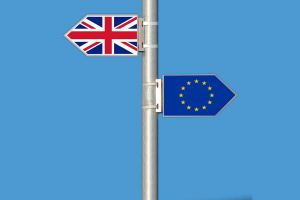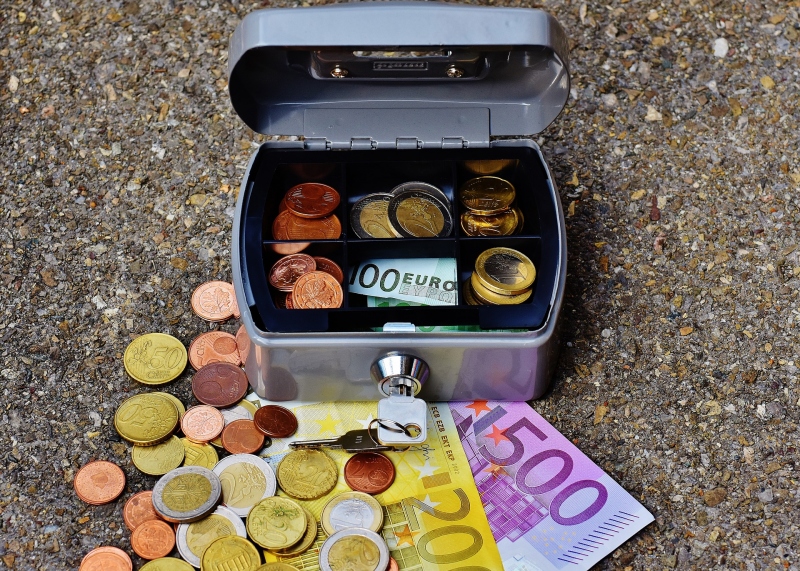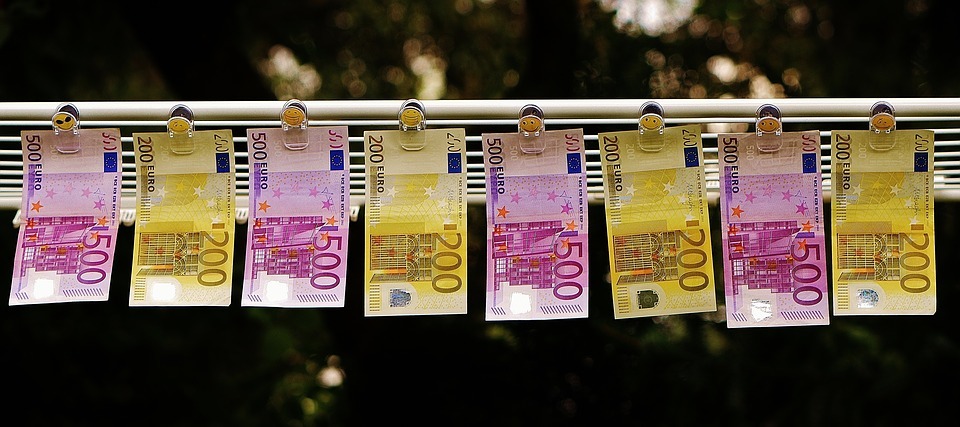Book Review “The Euro: How a Common Currency Threatens the Future of Europe” by Joseph. E. Stiglitz (published by W.W. Norton & Co, August 16, 2016)
Nobel laureate Joseph Stiglitz’s latest literary effort, a new book about the travails of the Euro and Europe, published in August with the apt title “The Euro: How a Common Currency Threatens the Future of Europe” couldn’t land in the muddy European political waters at a more appropriate time.
The summer of 2016 was a turning point for the so-called “European Project” – Europe’s long-run attempt to build a United States of Europe that began with the 1957 Treaty of Rome setting up the European Economic Community (EEC) with six founding members (Germany, France, Italy, Belgium, the Netherlands and Luxemburg), and continued in 1993, with the Maastricht Treaty, the European Union (EU) with (up to now) 28 member countries.
Problems have piled up this summer, relentlessly.
The opening salvo came in June with the UK referendum that unexpectedly led to “Brexit”, the decision to leave the European Union with 17.4 million Brits voting in favor. For the first time since its foundation, the EU is expected not to expand but to contract, down to 27 members – probably by 2019, when UK exit negotiations will be completed.
The most recent problem came in October with another referendum, this time in Hungary, calling on the population to disregard EU policies on refugees and reject quota obligation to accommodate asylum seekers. The referendum did not break the 50% threshold and the result was therefore declared illegal, but it did demonstrate that once again, a hefty minority, 3.6 million Hungarians (43% of voters), supported their government’s continuing opposition to Brussels.
Against this background, Joseph Stiglitz’s book has special resonance.
As he convincingly argues, the Euro was supposed to bring the European project forward but it has done nothing of the kind – if anything, the European Project has suffered setbacks just as much outside as within the countries of the Eurozone, the 19 EU members who use the Euro as a common currency. Incidentally, this is not a minor currency: The 19 European countries together account for roughly 14 percent of world GNP, making it the third largest economy in the world, after the United States (20 percent) and China (18 percent).
Do not delude yourself into thinking this is not important for the rest of the world: should the Euro collapse, the shock would shake the whole world.
It could even start another Great Depression.
A Slow Death
Stiglitz minces no words in roundly chastising European leaders for “muddling through” a succession of Euro crises, ever since the first Greek debt scandal broke out in 2010. The book is a convincing diagnosis of what went wrong and why successive “bailouts” of Greece (three so far) have failed miserably, leaving the country six years later with an inexorably rising debt and a Gross Domestic Product diminished by a quarter, while the exceptionally high unemployment (a mind-boggling 50% for the young) won’t budge – really as bad as a war. Stiglitz’ detailed description of the Greek case is harrowing. A must read for anyone who hasn’t followed the drama closely.
And he is equally convincing in arguing that Ireland, often promoted (mostly by Germans) as the “poster child” of the success of Europe’s monetary and austerity policies is no such thing. EU-imposed austerity measures “helped ensure that Ireland’s unemployment rate remained in double digits for five years, until the beginning of 2015, causing untold suffering for the Irish people and a world of lost opportunities that can never be regained.” Tough words that apply equally well to the other “crisis countries” of the Eurozone. For example, Portugal, also promoted by the IMF as a “success”, is far from that: The facts are that “the government might be borrowing with more ease, but the Portuguese people never experienced a real recovery.” Indeed, across Europe, excessive reliance on austerity and monetary policy “has resulted in even greater inequality: the big winners are the wealthy, who own stocks and other assets […]; the big losers are the elderly who put their money in government bonds, only to see the interest rates generated virtually disappear.”
The reason for such a deplorable state of affairs? First, a misplaced belief in what another famous economist, Paul Krugman, calls the “confidence fairy”: the idea that with austerity and a balanced budget, business confidence will be restored, which overlooks the simple fact that when consumer demand is depressed, business has no incentive to invest. In a recession, the confidence fairy, as Krugman says, becomes a zombie.
Photo Credit: Elias/ Pixabay
Beyond that, the bottom line of the problem in the Eurozone is a disquieting lack of solidarity.
Germany – the great winner of the Euro, the only country that has been able to take advantage of it because when it was introduced, it was set at a lower valuation than where the Deutsche Mark would have been (and hence helped sustain the German export boom) – has steadfastly refused to come to the rescue of Greece, blaming it for its troubles, ignoring the facts on the ground. For example, as Stiglitz reminds us, that Greeks, far from being lazy bums as the Germans depict them, work on average fifty percent more hours per day than the Germans do (2014 data).
Perhaps what is most shocking – and morally reprehensible because of the unnecessary pain it has imposed on average Greek citizens who lost their jobs and homes – is the behavior of the “Troika”, the experts sent by the European Central Bank, the European Commission and the International Monetary Fund to advise the Greek government. Spurred by Germany, the Troika has imposed a series of incredibly insensitive austerity measures and “reforms” as conditions for every new round of bailout. Unlike the US Federal authorities that help American states in perennial difficulty (for example, West Virginia) with fund transfers, Germany will have none of it, insisting on austerity measures and balancing the debt. Germany loudly proclaims that the Euro cannot be a “transfer union” when in fact that is precisely what any common currency is: a transfer union, just like the dollar.
Stiglitz clearly disagrees with Mr. Jens Wiedmann, the President of the Bundesbank, the German Central Bank that has the largest voice on the board of the European Central Bank (the institution monetarily backing the Euro – but with none of the powers of the Federal Reserve as it was never mandated to go beyond controlling inflation and address problems of growth and employment). In a recent interview this summer, Wiedmann, when asked about the banking crisis currently facing Italy (some of its oldest banks, including historic Monte dei Paschi di Siena, are facing insolvency), acknowledged the Euro is indeed at a “crossroads”. But he saw no way out except “a return to the principle of individual national responsibility enshrined in the Maastricht Treaty” – i.e. going back to the 1993 status quo – and adopting “an orderly procedure for dealing with government financing problems.”
RELATED ARTICLE: “IS BREXIT REALLY HAPPENING?“
An “orderly procedure”? As Stiglitz argues, it’s too late for that: the “rules” and “procedures” cherished by the Germans are in fact undermining the Euro.
One can only hope Mr. Wiedmann will read Stiglitz’s book and learn something from it.
According to Stiglitz, what Europe needs is either “more Europe” or “less Europe”, but what it certainly does not need is the status quo: that would be the equivalent of a slow death. And he brilliantly diagnoses all the reasons why the Euro is headed towards a slow but sure death.
As he explains it, the problems of the Euro go well beyond the Greek debt crisis.
They have to do with a common European currency that was deeply ill-conceived from the start. It was, as he puts it, a “fatal decision, in 1992, to adopt a single currency without providing for the institutions that would make it work.” That, to me, a convinced European, is music to my ears. I’ve spent years on my blog, post after post, trying to explain what was wrong with the Euro, a currency people expect to see walking on one leg (the monetary one) without the second leg (the fiscal one) that all currencies need to function: you need a Central Bank (and that was created with European Central Bank), but you also need a common Treasury. But I’m not Stiglitz and it’s good to see a towering figure like him getting down to explaining it in clear terms, accessible to anyone – no need for a degree in economics to read his book.
Where his book becomes truly creative is in Part IV, where Stiglitz turns to solutions to try and save the Euro and, with it, the European Project.
How to Save the Euro
The depression and crises that have battered the Eurozone since 2009 are avoidable but, as Stiglitz argues, require that there be “a fundamental commitment of the Eurozone to maintain the economies at full employment.” The (chiefly German) obsession with balancing state budgets, austerity measures and fighting a non-existent inflation (we are nearly in a deflation) needs to be abandoned and abandoned fast. Such measures, particularly austerity in times of recession, can only “lower the crisis countries’ potential growth for years to come.”
 PHOTO CREDIT: Alexas Fotos/ Pixabay
PHOTO CREDIT: Alexas Fotos/ Pixabay
He notably proposes six essential structural reforms with many policies attached that make for fascinating reading. However, I want to focus here on the few that I believe are an absolute priority if the Euro is to usefully function as a common currency for all 19 member countries, including and especially for the so-called “crisis countries”, from Greece to Ireland and even now Finland, and of course the biggest of them and as such the most worrisome, Italy. What needs to be done is to launch as soon as possible:
- A banking union, including a common deposit insurance and common resolution, i.e. procedures “for what should be done with banks that cannot meet their obligations”; this will prevent money from flowing from banks in “weak” countries to “strong” (surplus) countries;
- Eurobonds to be issued by the European Central Bank and underwritten by the Eurozone as a whole; this is what Stiglitz calls “mutualization of debt” and it need not be dangerous – “safety valves” could be put in place to avoid excessive borrowing and at low-interest rates (which is likely for Eurobonds) “most of the crisis countries should have no trouble servicing their debts”;
- An expanded mandate for the European Central Bank that would (1) allow the Bank to address economic growth and employment issues just as the US Federal Reserve does; (2) make it responsible for ensuring that commercial banks actually provide credit to businesses, so that “the financial sector is working the way it should”, something that is not happening now – as Stiglitz repeatedly points out, “the financial markets have failed in their basic task of recycling savings, making sure that the savings are used productively”; (3) give it expanded room for maneuver, inter alia, to enforce banking regulations, including, for example, the power to vary bank capital requirements in the member countries, loosening them in countries facing weak demand and tightening them in those facing excess demand and inflationary pressures; what all this amounts to is a call for “a common framework for stability”: by this, Stiglitz means measures enhancing monetary and also fiscal policy to improve flexibility, speed, and response to an economic slowdown; this includes in particular advice to “surplus countries” to engage in expansionary fiscal policies, raising minimum wages and strengthening workers’ bargaining rights (read Germany: it is high time that this particular “surplus country” should address these issues, too many German workers are left holding the bag while export industries pile up money);
- Counter-cyclical measures: including (1) a “solidarity fund for stabilization” to fund unemployment and to “support active labor market policies that help move people into new jobs” – such a fund could be financed by a tax on member countries that run a surplus (like Germany); (2) a “European-wide small and medium-size lending facility”, similar to the US Small Business Administration to jump-start new businesses and sustain expansion; (3) an expanded role for the existing European Investment Bank so that it goes beyond financing infrastructure and makes counter-cyclical investments.
- A common fiscal framework: this is perhaps his key proposal, one that will no doubt meet strong opposition in Germany: it involves “creating a capital budget, distinguishing between government spending on consumption from that on investment”; unlike the proverbial “Swabian housewife” who balances her budget every year, a government should behave like a “modern firm which looks at its balance sheet and undertakes debt if the returns on the investments that it finances exceed the cost of capital.” In fact, most government investments are multi-year, from building schools to building bridges and roads and airports, not housewife stuff.
There are many more important measures proposed – for example, Stiglitz is deeply concerned by what he calls “rampant short-termism” in the business community whereby firms are more concerned with short-term quarterly gains that make their shares look good on the stock market than they are with long-term productive investment.
Or another concern is the promotion of environmental investments; as he says, “it will be hard to incentivize firms to make ‘green investments’ if there is no price of carbon, that is, if those who pollute are not forced to pay the consequences of their pollution.” While a carbon market already exists in Europe, it is neither high enough, nor active enough (and probably also corrupt).
But the above list is the absolute minimum needed to save the Euro. Anything that falls short of this “will substantially increase the likelihood that the euro fails” concludes Stiglitz, reminding us darkly that “so far, the euro not only has failed to achieve those broader ends [of increased European integration], but has had the opposite effect: poorer growth and more divisiveness.” Well said, and I couldn’t agree with him more. And as he says, “markets are impatient, and they will not wait until perhaps further reforms are made.”
No question, time is running out on the Euro.
I believe that the above “structural reform” proposals made by Stiglitz are practical and eminently doable; much more could be done of course, and Stiglitz goes to great pain to list everything else that is needed – for example, the Greek debt ought to be forgiven if Greece is ever to recover, considering the depths to which the Greek economy has been plunged by the Troika’s misguided advice, not to mention the deep, unconscionable human suffering incurred.
Photo Credit: Alexas Fotos
But there is a catch in all this: what these proposals need is a strong political will and a sense of solidarity across the Eurozone – both things that have been sorely missing from the European political scene of late. Can Germany feel any solidarity with any other EU member? Can the pain of average citizens battered by austerity measure touch their heart? Can they feel compassion for the 40% of Greek children that have fallen into poverty as a result of Troika-induced policies? The number was half of that before the Troika started.
One wonders.
My hope is that Brexit will act as a wake-up call for the EU in general, and for the Eurozone in particular, where so many concrete measures could be taken to move the European Project forward. Stiglitz provides a wealth of details regarding these measures and a close reading of his proposals is a must for any serious European politician who wishes to understand the Euro problem and honestly find solutions.
Thinking the Unthinkable: A Dead Euro
But Stiglitz goes further. He has waded through the unthinkable: the demise of the Euro. There is a real risk, he argues, that due to the “persistent euro crisis and the conflict over how it has been managed makes it more difficult to develop consensus policies…” In other words, the damage is done and runs so deep that nobody in Europe really wants the Euro anymore – not even the Germans who, in spite of being the main beneficiaries of the common currency, keep dreaming of their Deutsche mark.
As Stiglitz puts it, this was a bad monetary experiment and it probably would make sense to put a stop to it. And he devotes the two final chapters in the book to alternatives to the Euro.
Imagine the world without the Euro. Stiglitz argues that an “amicable divorce” is possible, with the breakdown not in 19 currencies perhaps, but in two or three different currency groupings. He believes this would not entail excessively high costs. Maybe so but I doubt it – though there is no space here to debate the argument.
Or imagine the Euro without Germany. That too would be a solution, and one that was first put forth by Soros, the genial investor, not by Stiglitz – but he buys into the argument: the solution makes sense because the real disruptor of the Euro (and beneficiary of that disruption) is Germany. With the departure of Germany and a few “northern countries” (the Netherlands among them), the exchange rate of the southern “crisis countries” would adjust at a lower level, with an immediate boost to export, stimulating growth. Conversely, in the northern countries, “the stronger northern-euro would work wonders to eliminate the persistent trade surplus, which has been problematic not only for their partners in the Eurozone but for the global economy.” And Germany would, at last, have to address its surplus, something it has resisted doing so far.
Or follow Stiglitz in his creation of a “21st century transactional system”, a highly imaginative solution incorporating electronic technology in banking in a way that beats Bitcoin; it also would include using “trade chits” (they were originally suggested by Warren Buffet) as an imaginative tool to manage the high level of volatility in market economies.
Or make the Euro “flexible”, allowing it to fluctuate differently in different country groupings, in response to different economic situations – but again, to make this possible would require moving to a totally electronic currency and using “trade chits” to control money flows between trading partners. With this innovative idea, Stiglitz has decidedly transported us into sci-fi economics. Perhaps it might become doable someday, but not right now.
While all this is, to my mind, pleasingly and often charmingly imaginative, it is not as realistic as the short list of proposed structural reforms mentioned above. But those two chapters certainly are a worthwhile read. And, for European readers, thinking the unthinkable helps put the proposed reforms in perspective: the alternatives to the Euro do exist, but they are anything but desirable and would require leaping into an unknown future.
Recommended Reading: “WHY REFERENDUMS AREN’T AS DEMOCRATIC AS THEY SEEM?“




 PHOTO CREDIT: Alexas Fotos/ Pixabay
PHOTO CREDIT: Alexas Fotos/ Pixabay






